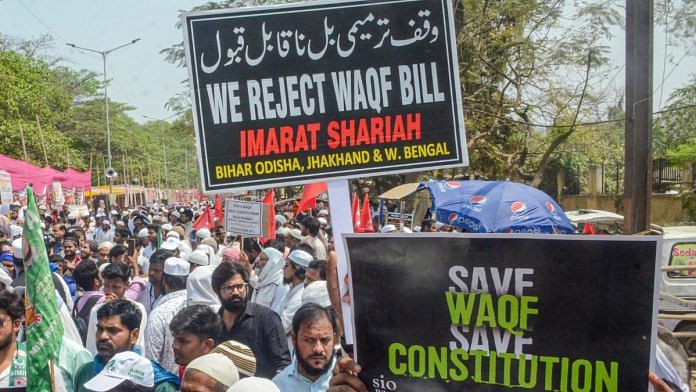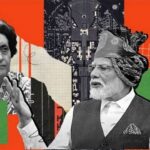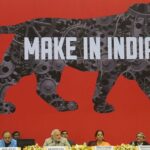This article will focus on the half threats, for it is only a united nation that can deal with its external enemies effectively. Gen Rawat did not clearly spell out who constituted the half, but here is my list. Terrorism in Jammu & Kashmir, often aided by some sleeper cells within Kashmir, is one. The potential for Sikh alienation, despite no support on the ground for Khalistan, is another. Various north-eastern states also face sporadic attacks from militant groups, and these must be tackled. Then there is the Maoist threat, which appears to be waning now. Also unstated is the worry that small groups of Muslims are being radicalised in various states, for which the BJP’s soft Hindutva is being blamed—often unfairly. Was it BJP’s Hindutva that made Kerala —where Muslims face no discrimination whatsoever and have better socio-economic scores—the largest exporter of recruits for the short-lived Islamic State?
Before we address the two or three external threats, we must first address the half front, both the obvious ones, and the ones lurking beneath the surface. It is precisely this half front that Pakistan is trying to turn into fifth columnists in India, with the hope that revived insurgencies on the western and northern fronts will weaken us. The by Pakistan to target gurdwaras and temples in Punjab and Jammu & Kashmir, including possibly the Golden Temple, is a reminder that Pakistan is assiduously trying to turn Indians against Indians.
Pakistan is also using media and psy-ops to make Indians fearful and call for another bout of “”, which has never led us anywhere in the past. It only gave Pakistan opportunities to infiltrate our society and create more confusion.
The fact that Bollywood didn’t react on social media or elsewhere when Operation Sindoor was launched tells us a story. Various media handles that demanded immediate de-escalation when the tide was turning in our favour are also part of this deliberately-created confusion by our enemies.
The only way of shrinking the half front, both the visible ones and the ones lurking beneath the surface, is to adopt the traditional carrot-and-stick approach, whichever works better in whichever case.
In Jammu & Kashmir, for example, we could clearly tell the political parties that their help in outing the sleeper cells will determine the pace at which they will be given back statehood. Jihadism is not in the economic interests of anyone in J&K.
In Punjab, the outreach to Sikh groups must start with the reassurance that the Sikh identity will never be diluted, and Sikh places of worship will always be protected. But this needs organisations like the Shiromani Gurdwara Parbandhak Committee and political parties like the Akali Dal to work with the Indian state to isolate the small numbers of Khalistani sympathisers in their midst. An economic package to revive Punjabi entrepreneurship may help address the feeling that Sikhs have a future only in Canada and Australia. One of the big tragedies of the last few decades is the economic decline of Punjab, created by the even bigger decline of Punjabi entrepreneurship. Those left behind with large farms to manage wrongly believe that more MSP (minimum support prices) for farm produce is the answer, when the water table is falling, soil is getting degraded, and jobs outside agriculture are hard to find. Punjab has to be helped to rediscover its entrepreneurial DNA.
While the Maoist and Northeastern insurgencies have reduced, we must clearly keep one eye cocked to ensure that they don’t revive.
Our biggest challenge is our Muslims, who have been led to believe—both by our own “secular” media and foreign powers—that they are being reduced to second class citizens, when that is not the case. You cannot cite stray cases of lynchings, or the recently passed Waqf Amendment Act, as instances of this targeting. The Waqf law is itself problematic for a secular country. If that is not the case, why has no one ever suggested that all religions be given Waqf-like laws, with solid judicial powers, which no one can question in the lower courts? But will this really work or create more discord between communities? And can a handful of incidents involving lynchings, while entirely unacceptable, be converted into a narrative of an entire community of 200 million being targeted? These must be seen as localised incidents and dealt with locally and not treated as national calamities. And why is it that the killing of a Kamlesh Tiwari, Ulhas Kohle, Kanhaiyalal, or Ramalingan never registers as comparable crimes against Hindus?
Why is it that even feeble attempts to focus on the plight of Hindus in Pakistan and Bangladesh are seen as targeting Indian Muslims?
This is not to suggest that Muslims do not have genuine grievances and concerns, but any broader understanding between Muslims and Hindus must not start with the assumption that only one party is culpable. It cannot be anyone’s case that Hindus must bear the bulk of the burden of keeping this country united, while the minorities have only rights, no duties.
The assumption that the majority must make the biggest concessions is seriously flawed for Hinduism as a unitary thought process. It was not created top down with a clear founder and a widely accepted set of fundamentals. Hinduism grew from the ground up, diverse and different from birth, and it is often defined by practices, rituals, traditions and even dietary habits. There are many scriptures, but no unifying set of religious dogmas or values that all Hindu sampradayas accept. What we call Hinduism today is the result of thousands of years of interaction and communication among diverse communities to find common ground. Hindus are an artificial majority manufactured by counting those who are not Muslims, Christians, Sikhs, Jains and Buddhists. NOTA is not the way to define any majority.
But the larger point is this. There has to be a Hindu-Muslim dialogue at multiple levels, national, regional and local, to understand each others’ red lines and settle differences on the basis of two-way compromises. Governments, at the centre and states, can facilitate this process, but without the two communities working out compromises they can live with, peace on this half front will always remain a work in progress.
(Edited by Theres Sudeep)








